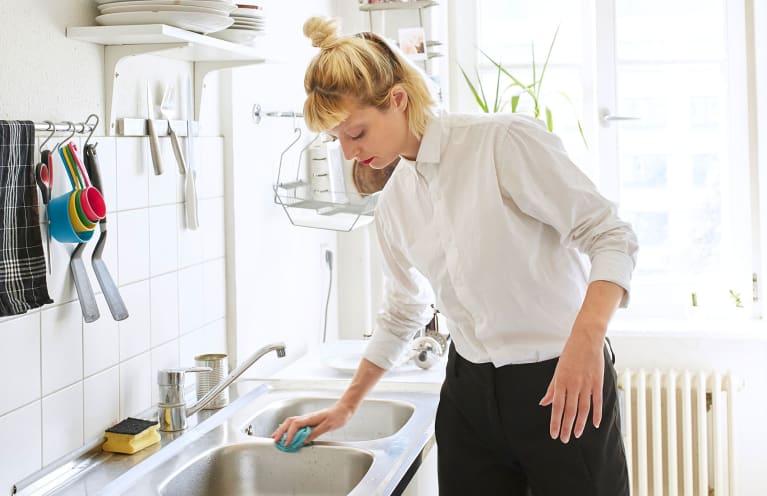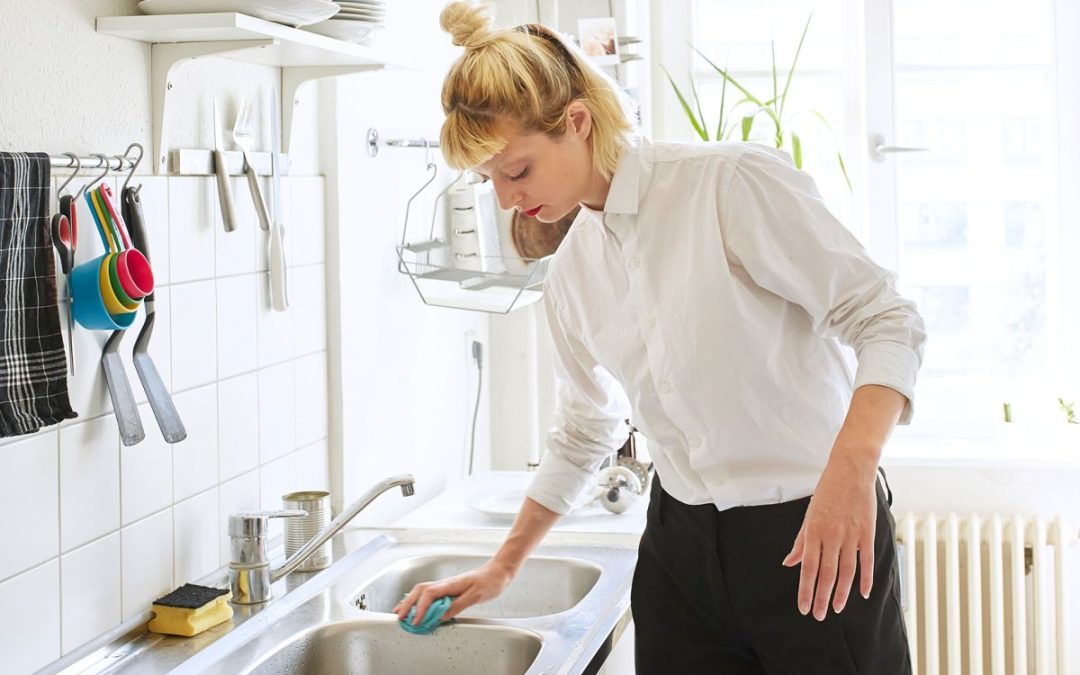
September 9, 2022 — 9:02 AM
Black mold (and mold, in general) is not something we want in our homes. The longer a mold colony exists inside, the more microscopic particles it will release into the surrounding environment. These will then lower indoor air quality and contaminate surfaces within a home, allowing for a long list of potential health effects due to exposure. That’s why any mold growth discovery should be handled the exact same way: quickly and correctly.
That being said, mold is like a weed. It takes extra effort to remove not only the visible colony but also any microscopic byproducts and root systems present as well. Once you identify black mold at home (here are the telltale signs), here’s how to remove it correctly to help ensure your indoor environment stays safe.
How to remove black mold properly.
Colonies of mold can come in a variety of colors, shapes, and textures. When it comes to black mold, specifically, it’s often dark in color (black, green, or brown) and will appear either fuzzy or slimy depending on the specific species. This growth could pop up in areas such as the toilet tank, grout, windowsills, or underneath sinks.
The first step is to determine if the problem can be handled by you or if professionals need to be called in. A good rule of thumb is to never try to remediate areas that are larger than 10 sq ft. by yourself.
The tricky aspect is that some mold issues can often be hidden behind or underneath surfaces. A good tip is to pay attention to any odors as well. Mold growth often creates a damp, musty, earthy smell due to the release of gases called microbial volatile organic compounds (MVOCs). If this is present, or you find visible water damage, there could be concealed mold present.
Once you find mold, before you even think about removal, you need to make sure the issue that led to the mold growth in the first place is resolved and that any porous structural materials are replaced, such as drywall. The roots of a mold colony can grow deep within a surface, so it’s best to remove the material and start fresh. If someone isn’t confident they can achieve this, it’s best to go ahead and call in the professionals.
What to do with small mold colonies:
If you find a small colony of black mold (or any mold) on hard, nonporous surfaces like metal or glass, and the issue that led to the mold growth is resolved, you can remediate it by applying a botanical cleaner like Benefect Decon 30, allowing it to sit for 30 seconds, and then wiping it with a microfiber cloth.
Health Coach Certification
A best-in-class, board-certified curriculum grounded in a holistic approach to healing.

Repeat the process three times to ensure hard-to-remove particles (like mycotoxins) are actually gone. It’s also a good idea to deep clean the surrounding area to remove any spores and mycotoxins that were released. Throw away the microfiber towel when finished, just in case.
If you find black mold on semi-porous surfaces, such as hardwood, the area needs an abrasive technique to remove the roots, the mold colony, and any byproducts released. From there, a thorough remediation process can be used to eliminate the particles present, and then the surface should be sealed. This comprehensive process is necessary because if the roots are left behind, the mold can grow right back. On the other hand, if contaminants are still present, exposure will continue. As the EPA states, even dead mold can trigger adverse health reactions.
For porous items like clothing, it’s best to throw them away and start fresh with a new item to ensure all of the contamination is removed.
Note: Even small-scale mold removals should still be cautiously addressed by utilizing correct engineering controls, protective wear, and proper remediation protocols. Particles can get kicked up during the remediation process, potentially triggering symptoms and increasing the risk of cross-contamination to other areas of the home.
What to do about larger mold issues:
A large colony of mold will look relatively similar to a smaller colony. These issues are often caused by water damage that went undetected for some time. Flooded basements, sink leaks, windows installed improperly, holes in the attic, and gutter issues are a few examples. Common areas for growth include the basement, attic, crawlspace, behind grout, and underneath sinks.
When it comes to a bigger contamination problem, a qualified mold inspector and remediation team should be brought in to deal with the issue. They should be able to handle the issue properly and thoroughly so that the indoor environment is no longer toxic to those who are inside.
Make sure the remediation professionals you choose get rid of the mold, address the source of it (otherwise, it will just grow back), and eradicate mold contamination like mycotoxins and bacteria.
How to prevent black mold from returning.
Avoiding mold growth is a two-part process. First, you need to reduce moisture in the home, and you also need to remove all mold spores and other small particles that colonies can use as additional food sources. Here are a few habits to help you prevent mold at home:
- Clean up spills and pooled water ASAP.
- Repair leaks or other water-damaging issues within 24-48 hours (many species of mold can grow after this timeframe).
- Maintain indoor humidity levels of 35-50 percent.
- Create airflow by turning on exhaust fans while using bathrooms and kitchens.
- Deep clean frequently using EPA-approved botanical cleaning products, a HEPA vacuum cleaner, and microfiber towels.
- Switch to the highest-rated MERV filters possible for the specific HVAC system in the home and change them on time.
- Hang up all wet items to dry, including towels and bathmats.
- Clean all appliances regularly.
- Keep up with regular home maintenance, including cleaning gutters, having the HVAC system serviced, checking pipes and plumbing for wear and tear, and ensuring the foundation is in tip-top shape.
- Invest in an air purifier that will pull microscopic particles from the air so they don’t continue to circulate and build up within the indoor environment. Fewer particulate matter in a home results in healthier indoor air quality and reduces the likelihood of a particle, such as a mold spore, opportunistically landing on a habitable surface.
While it’s possible to (carefully) remove some smaller sources of mold yourself, larger issues are best left to the professionals. That being said, a pound of prevention is worth an ounce of cure. The more people can do to steer clear of indoor mold growth in the first place, the fewer headaches they’ll avoid and the healthier their home will be.
https://www.mindbodygreen.com/articles/how-to-get-rid-of-black-mold-at-home

